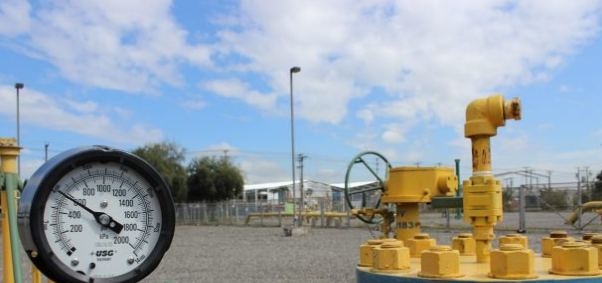
Higher supply from that country, given the increased production in the Vaca Muerta field -one of the largest in the world-, together with lower consumption due to the trans-Andean economic slowdown, explain the increase. In Chile, however, the private sector is cautious, as the crisis of the past decade is still fresh in their minds.
(La Tercera-Pulso) Argentine gas is back in Chile. Although it was unthinkable a few years ago, the neighboring country began to export gas surpluses to Chile in the middle of last year, first timidly, but with volumes that grew as the months went by.
So much so, that so far in 2019, on average, 39% of all gas imported, either through available pipelines or through liquefied natural gas (LNG) regasification terminals, came from Argentina, with volumes not seen for more than a decade. Even more: in December last year, Argentine gas accounted for 48% of the total, while in April it reached 43%.
It is expected, however, that as the year progresses shipments will decline, as Argentina is very intensive in the use of gas in winter.
What is the reason for this boom? Fundamentally to the exploitation of the Vaca Muerta field, one of the largest in the world, which made the former gas power, after many years, become a surplus. Seeking a market for these surpluses, it was decided to take advantage of the gas pipelines linking the two countries, which remained empty after the cuts of the past decade.
However, the current supply is contingent, as it depends on seasonality. In other words, long-term contracts are not available but, in exchange, the price is lower. “We see Argentine natural gas as a complementary supply source to LNG, which further diversifies our supply options,” explains Carlos Cortés, executive director of AGN Chile, an association that brings together the entire gas chain.
“Argentine gas opens up the opportunity to continue developing the market for this fuel, particularly in those areas that have gas pipelines connecting them with Argentina and where there is no LNG import terminal, such as the Biobío and Ñuble regions, which require clean energy to replace polluting fuels,” adds Cortés.
Can Argentina be trusted again? Hugh Rudnick, director of the consulting firm Systep, points out that what has happened in recent months is an interesting trend, but there is the risk of political instability in Argentina. “In the long term, the opportunities of Vaca Muerta are enormous, rationality should prevail and exports should increase.
Chile will obviously be interested, but it is not obvious that you can rely on an import contract with them,” he adds.
“Argentina has significant natural gas reserves -particularly in Neuquén (Vaca Muerta), which, once the extraction process has started, should be monetized in Argentina’s natural markets, such as Chile, Brazil and Uruguay. In the short term and once the gas supply deficit still in force is overcome (…) there would be a surplus of more than 100 million m3 per day, which could be exported to neighboring countries and, eventually, to the global market, as LNG. It should be noted that, until the beginning of the restrictions, Chile consumed up to 22 million m3 per day”, explained Enap.
“If the price of gas from Argentina is maintained and even improved, the Chilean electricity system could dispatch efficient natural gas generation units, helping to meet the goal of substantially reducing greenhouse gas emissions and other pollutants,” the state-owned company adds.





